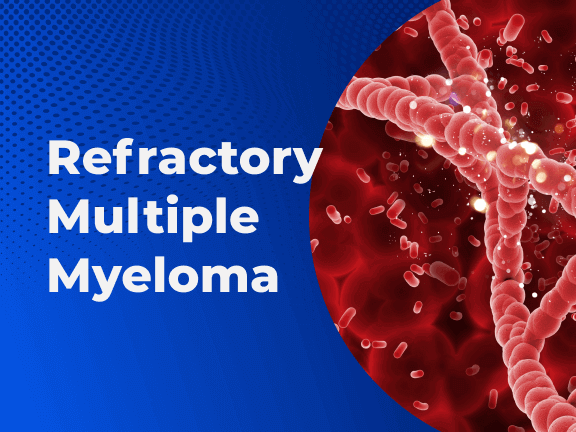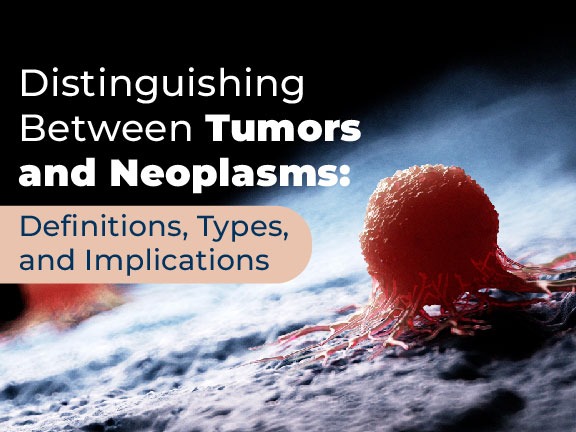Refractory Multiple Myeloma
Multiple myeloma is the most common type of plasma cell cancer. Myeloma cells are abnormal plasma cells and are produced in the bones and bone marrow. These cells can eventually develop into tumors called plasmacytomas in many of the bones throughout the body. Multiple myeloma is not considered a single disease, there are many subtypes.
What Is Refractory Multiple Myeloma?
Refractory multiple myeloma occurs when the first treatment for multiple myeloma doesn’t work. Plasma cell neoplasms are considered refractory when the number of plasma cells continues rising, despite treatment being given. Like other cancers, plasma cell neoplasms are called relapsed when they have returned after treatment has been completed.
What Causes Refractory Multiple Myeloma?
Multiple myeloma is caused by abnormal cells that develop in the bone marrow. As the abnormal cells grow and divide, complications begin in the blood cells and bone marrow. Researchers are still unaware of the exact cause of multiple myeloma, or what leads to the mutations that cause patients to be resistant to first-line treatments.
What Are the Symptoms of Refractory Multiple Myeloma?
The symptoms in multiple myeloma and refractory multiple myeloma are the same. These symptoms return after treatment or never go away in many cases of refractory multiple myeloma. In a majority of cases, bone pain is experienced in the lower back or ribs. If the bones continue to weaken from the cancer, they can even fracture.
Other refractory multiple myeloma symptoms include:
- Weakness
- Purple spots on your skin
- Frequent infection
- Shortness of breath
- Appetite loss
- Fatigue
If symptoms persist through treatment, it is a sign that the current treatment is not working. Talk to your doctor if you continue to experience symptoms about how they can be alleviated.
How Is Refractory Multiple Myeloma Diagnosed?
The tests used to diagnose multiple myeloma and other plasma cell neoplasms are those that examine the blood, bone marrow, and urine. These tests include:
- Blood and urine immunoglobulin studies
- Bone marrow aspiration and biopsy
- Physical exam
- Skeletal bone survey
- Complete blood count (CBC) test
- Blood chemistry studies
- Twenty-four-hour urine test
- Magnetic resonance imaging (MRI)
- PET-CT scan
The following tests are done on the samples from a biopsy to monitor how treatment is going, determine the subtype of refractory multiple myeloma, and identify the proper treatment options:
Cytogenic analysis: The chromosomes in cancer cells are counted and checked for any alterations or damage. This test is used to diagnose cancer, determine the best treatment options, and monitor how well treatment is working.
FFISH (Fluorescence in situ hybridization) test: Laboratory test to identify and count the genes or chromosomes in cancer cells. DNA containing fluorescent dye is artificially made and then added to the patient’s tumor samples. The DNA then binds to specific genes and chromosomes and lights up when viewed under a microscope. This test helps doctors determine the appropriate treatment and confirm the subtype of multiple myeloma.
Flow cytometry: Laboratory test that measures the number of cells, the percentage of live cells present, and characteristics such as the size, shape, and biomarkers on the cell surface of a bone marrow tissue sample. The patient’s cells are stained with a fluorescent dye, placed in a fluid, then passed through a beam of light one at a time. The cells’ reaction to the light provides insight to the doctors for the diagnosis and treatment of multiple myeloma.
What Are the Treatment Options for Refractory Multiple Myeloma?
Because refractory multiple myeloma patients have already received one treatment that has not been effective, doctors will need to decide which treatment option should be used next. Stem cell transplants are common for multiple myeloma, but not refractory or relapsed multiple myeloma.
Treatment of relapsed or refractory multiple myeloma includes:
- Watchful waiting or active surveillance for patients whose disease is stable, and no symptoms are present
- For patients who were in remission for at least one year, the same drug may be used, which often includes one or more of the following:
- Targeted therapy with monoclonal antibodies (daratumumab or elotuzumab)
- Targeted therapy with proteasome inhibitors (bortezomib, carfilzomib, or ixazomib)
- Immunotherapy (pomalidomide, lenalidomide, or thalidomide)
- Chemotherapy
- Antibody-drug conjugate therapy with belantamab mafodotin
- Corticosteroid therapy
- Clinical trials offer drugs such as Car T-cell therapy, BCL2 inhibitor (venetoclax), or a targeted therapy with a small molecule inhibitor (Selinexor) and a corticosteroid
Refractory Multiple Myeloma Clinical Trials
Clinical trials are the main source of developing new targeted therapies and immunotherapies, which target biomarkers in multiple myeloma and other cancers. For patients to be eligible for these clinical trials, they need to already have received biomarker testing confirming the trial’s biomarker is present along with the rest of the enrollment criteria. Every clinical trial has unique enrollment criteria, so just having the biomarker present does not mean patients are guaranteed enrollment to their desired trial.
Massive Bio specializes in finding clinical trials for multiple myeloma patients who have had genetic testing, as well as others such as FISH analysis, gene expression profiling, and Next Generation Sequencing (NGS) testing. If you have been diagnosed with cancer and have a specific mutation, we are well-equipped to help you today. Many clinical trials are studying targeted therapies that are designed for specific cancer types. Massive Bio recommends NGS testing for patients to help determine an exact diagnosis.
Sources:












